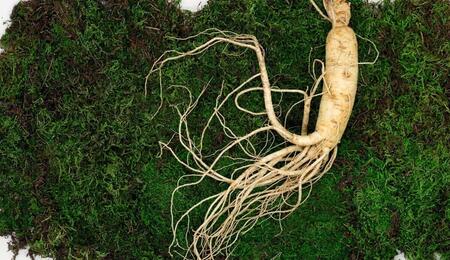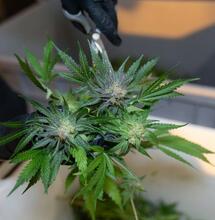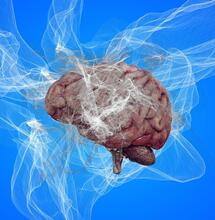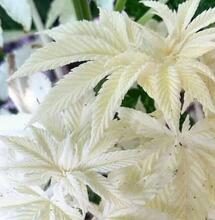Ginseng: A Plant for Health and Longevity

Ginseng is used around the world for its health-promoting properties, accessible via several varieties of the commonly-available herb. Most people know that ginseng is good for them; however, when attempting to buy this natural product, they may be surprised to learn that more than one type exists. Typically available are Korean varieties (both red and white), American and Chinese ginseng. What follows is a brief explanation of the different uses for these ‘alternative’ medicines.
Ginseng is an herbal medicine that is gentle and all-encompassing. When growing, the roots have the shape and appearance of a man, thus it is often called ‘man root’. The active substances in ginseng that make a person healthy are called ‘ginsenosides’, the active ingredients known for their adaptogenic properties. Ginseng is known as alterative (or adaptogenic) because of its non-specific, health giving qualities; adaptogenic medicines bring the body to a level of optimum health. For example, when blood sugar levels are high or low, ginsenosides will restore balance by triggering the proper response of the body’s regulatory systems. If immune system function is weak or misguided, ginsenosides will restore a healthy strength or direction in a similar manner.
Asian ginseng is the most common type on the market; its Latin name is Panax ginseng. Grown in Korea and China, it contains a variety of ginsenosides. In nature, the concentration of ginsenosides in Panax ginseng root is approximately four percent. Individual ginsenosides have been identified. The most important are ginsenosides Rb1, Rg1, Re, Rb2, and R1. Rb1 diminishes fatigue; Rg1, Re, and Rb2 stimulate DNA, protein, and fat synthesis in bone marrow cells. Ginsenoside R1 is mildly sedative.
Ginseng stimulates the pituitary and adrenal glands, increasing the body’s resistance to stress or harmful situations, and ginsenosides can help the physical body adjust to extremes of temperature in the environment. This alterative action upon the glandular system also increases the hormone secretions of the sex glands, increasing sexual function in both males and females. Thus, ginseng is a fertility aid.
Ginseng also increases the speed of neural impulse transmission, meaning that habitual or reflex activity becomes more efficient. The ability to think analytically - as well as general mental performance - improves. This is perhaps the most well-known application of the root among non-medical practitioners, and explains why many elderly medicine cabinets might contain a ginseng supplement.
Ginsenosides fight against muscular fatigue and tension, while their action within the heart causes it to contract more powerfully. Ginsenosides will also cause a contraction of peripheral blood vessels; this is thought to slightly increase blood pressure. The production of blood itself, known as ‘hemopoiesis’ (or ‘hematopoiesis’), is also increased.
Blood sugar levels can be lowered when ginsenosides interact in a synergistic manner with the body’s insulin. Appetite is increased, as are secretions in the stomach and small intestine that are responsible for the digestion of food. Ginsenosides also have an anti-diuretic impact, and can cause an increase in protein synthesis, while cholesterol levels are reduced.
Ginsenosides are known to inhibit an allergic response to antigens by the human body. This is believed to be due to their antihistamine effect.
Selecting a Variety When Purchasing Ginseng
Ginseng roots sourced directly from China are sold in herb stores, although ginseng from China is generally thought to be weaker than ginseng from Korea. Chinese ginseng roots generally have a ginsenoside content of two percent, while the more powerful Korean ginseng is preferred for medicinal uses.
Wild versus cultivated varieties present another option when buying ginseng; in some areas, woods-grown can be a third choice. ‘Cultivated’ means that the roots were grown commercially. The skins of these roots are smooth, reflecting the ease the root had in penetrating the loamy soil. Wild roots have ridges along their skin due to the difficulty in penetrating untilled soil. Wild ginseng roots are believed to more strongly nourish the Spirit or Shen, and ginsenoside content is similar between the two. Individual wild roots are becoming quite rare and expensive. These wild roots can sell for thousands of dollars, when available. Woods-grown roots are semi-tended by a farmer, in the wild. They are believed to contain some of the Spirit or Shen nourishing aspects of the wild roots.
Ginseng root is typically sold as either a whole root or in powder form, although more potency is retained in the whole root. Ginseng roots grow about one inch per year, and most roots are harvested when they are three- to five years old. Some valuable wild roots may be thin and quite long.
Asian ginseng roots are available as either white or red in color. The red roots undergo processing with steam. This treatment gives the red roots a Yang quality, thought to stimulate the Internal Heat for those who are deficient. White roots have Yin qualities. They are suitable for most people.
American ginseng, Panax quinquefolium, offers some different properties than the Asian varieties. More of a ‘cooling’ medicine, American ginseng promotes fluid production, increases salivation and nourishes the lungs. Supplementing the Yin aspects of the body, the American type contains basically the same ginsenosides as Korean ginseng, but in different ratios. American ginseng is an alterative medicine that fights fatigue, yet tranquilizes the mind. While much of the American export is grown commercially in Wisconsin, some American ginseng roots are produced in Canada.
Wild roots are found in the Americas and have the same value as wild Asian roots. This ginseng variety is very popular in Asia, because they have nothing like it. American ginseng roots most often supply the Yin-nourishing properties that stressed-out Americans require.
How to Use Ginseng as Medicine?
The best method of consumption is to warm the root in a toaster oven at around 100º to 110º F - this softens the root. Then, it is easily sliced into thin pieces that are either eaten, baked inside a chicken, added to soup or steeped in hot water.
Ginseng root hairs are another good option for medicine. These hairs are less expensive, due to appearance, but root hairs have higher concentrations of ginsenosides. As another alternative, concentrated extracts are sold with a ginsenoside content of eighteen percent - these are the most reliable.
One form to avoid is repackaged ginseng teabags or sachets, which have been tested and are often shown to contain little or no ginsenosides. Thus, prepackaged teas are unreliable as medicine.
Also read on Soft Secrets:








